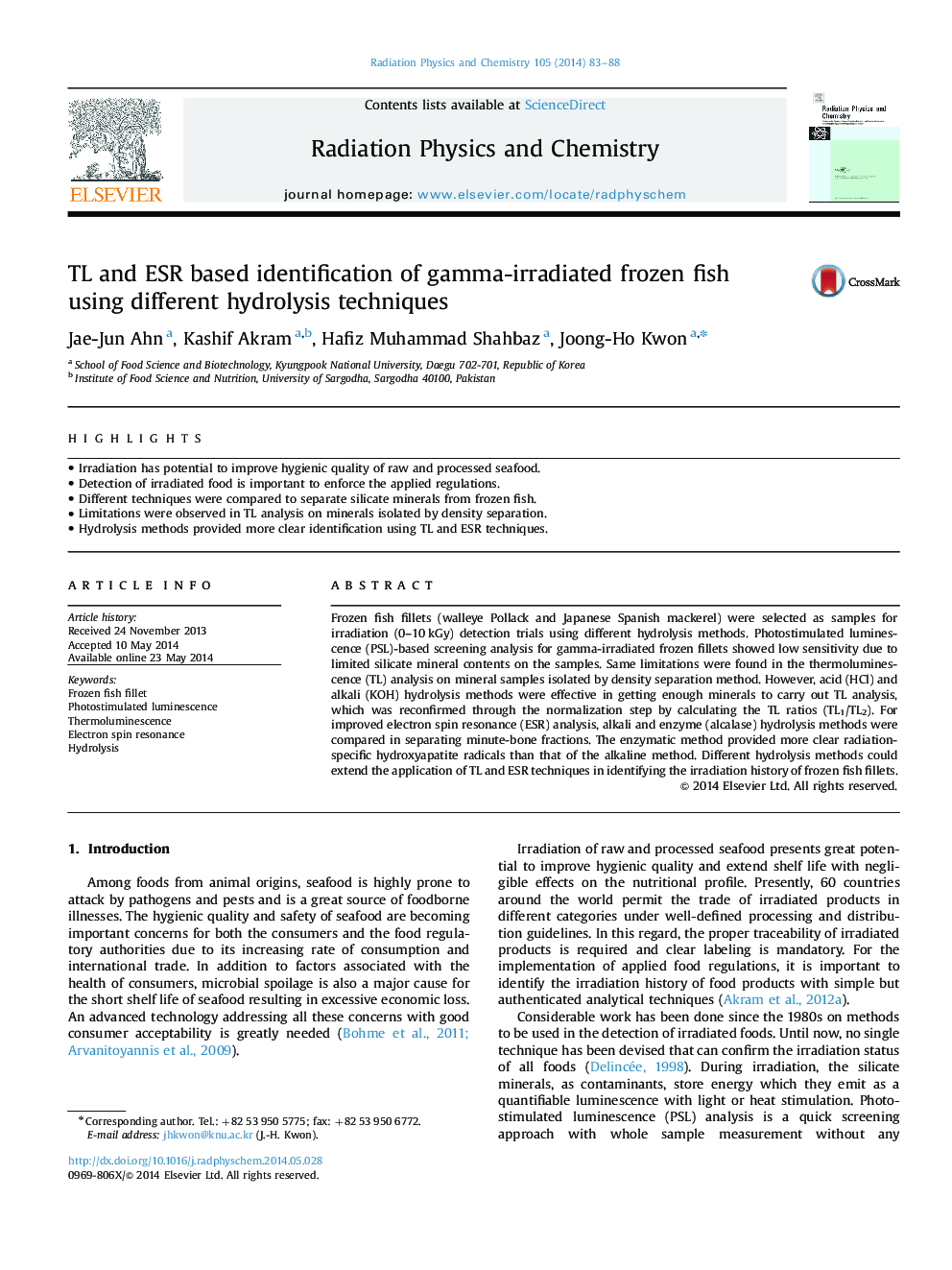| Article ID | Journal | Published Year | Pages | File Type |
|---|---|---|---|---|
| 1886026 | Radiation Physics and Chemistry | 2014 | 6 Pages |
•Irradiation has potential to improve hygienic quality of raw and processed seafood.•Detection of irradiated food is important to enforce the applied regulations.•Different techniques were compared to separate silicate minerals from frozen fish.•Limitations were observed in TL analysis on minerals isolated by density separation.•Hydrolysis methods provided more clear identification using TL and ESR techniques.
Frozen fish fillets (walleye Pollack and Japanese Spanish mackerel) were selected as samples for irradiation (0–10 kGy) detection trials using different hydrolysis methods. Photostimulated luminescence (PSL)-based screening analysis for gamma-irradiated frozen fillets showed low sensitivity due to limited silicate mineral contents on the samples. Same limitations were found in the thermoluminescence (TL) analysis on mineral samples isolated by density separation method. However, acid (HCl) and alkali (KOH) hydrolysis methods were effective in getting enough minerals to carry out TL analysis, which was reconfirmed through the normalization step by calculating the TL ratios (TL1/TL2). For improved electron spin resonance (ESR) analysis, alkali and enzyme (alcalase) hydrolysis methods were compared in separating minute-bone fractions. The enzymatic method provided more clear radiation-specific hydroxyapatite radicals than that of the alkaline method. Different hydrolysis methods could extend the application of TL and ESR techniques in identifying the irradiation history of frozen fish fillets.
